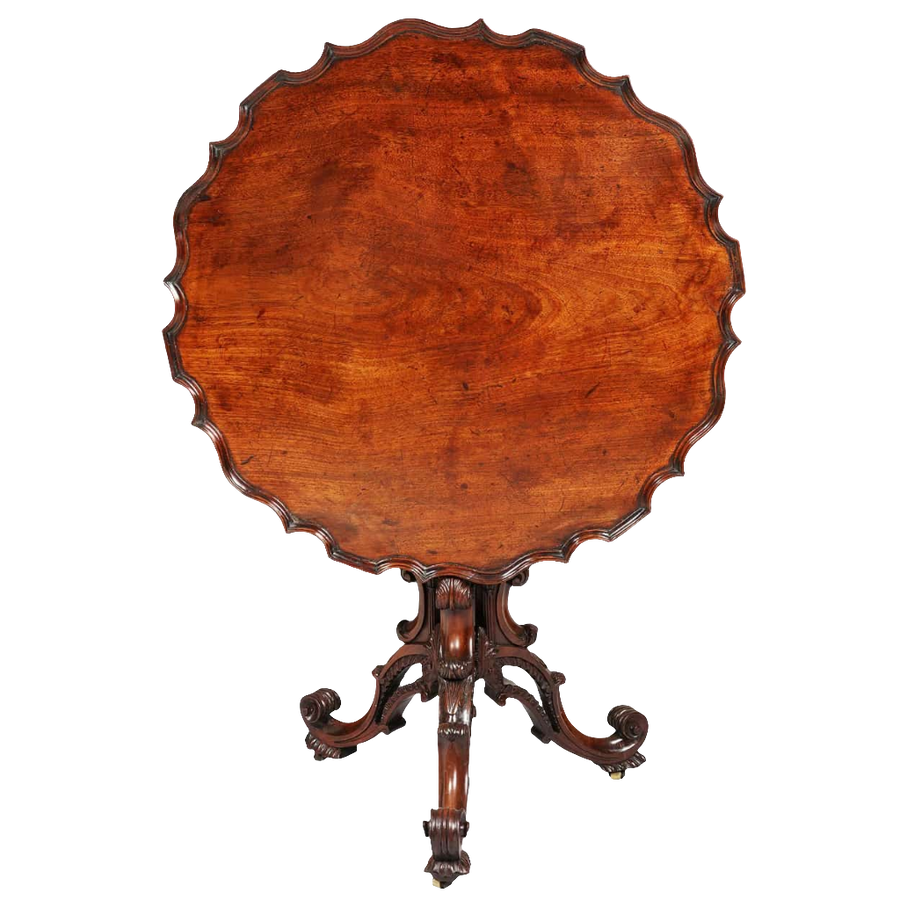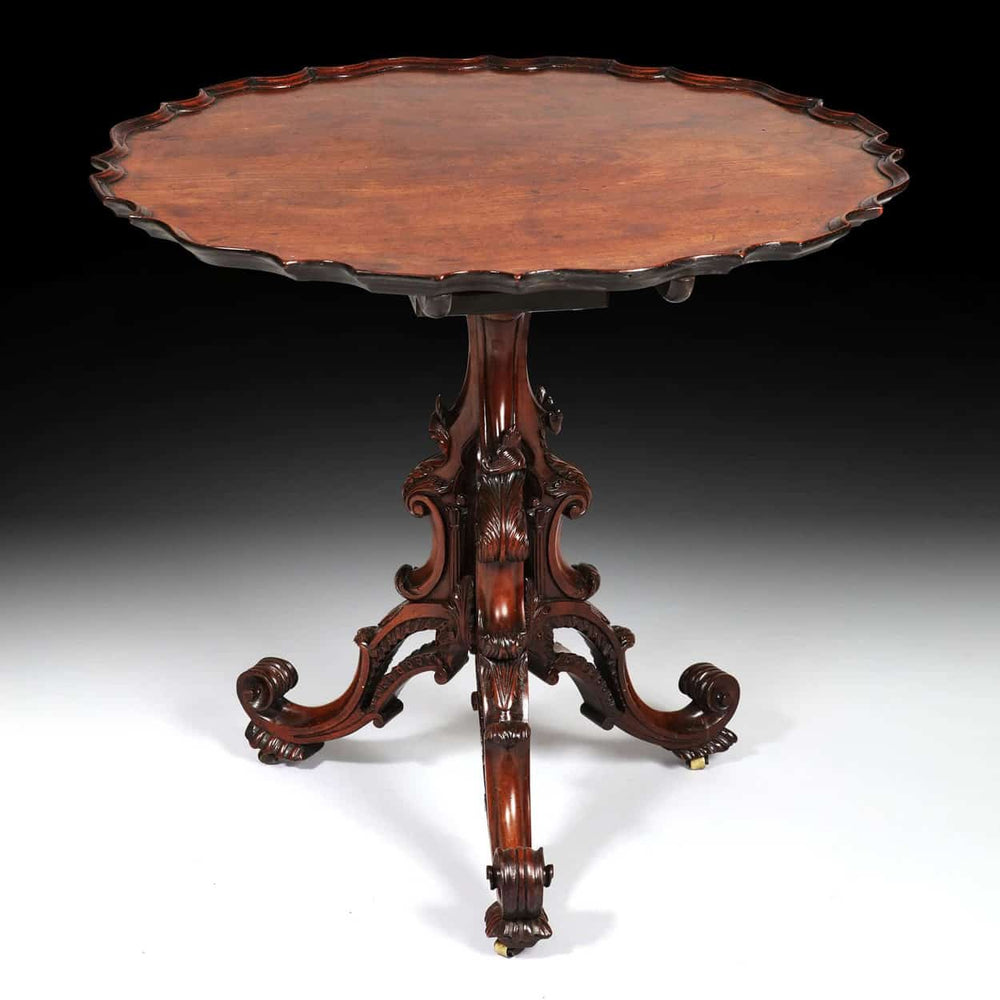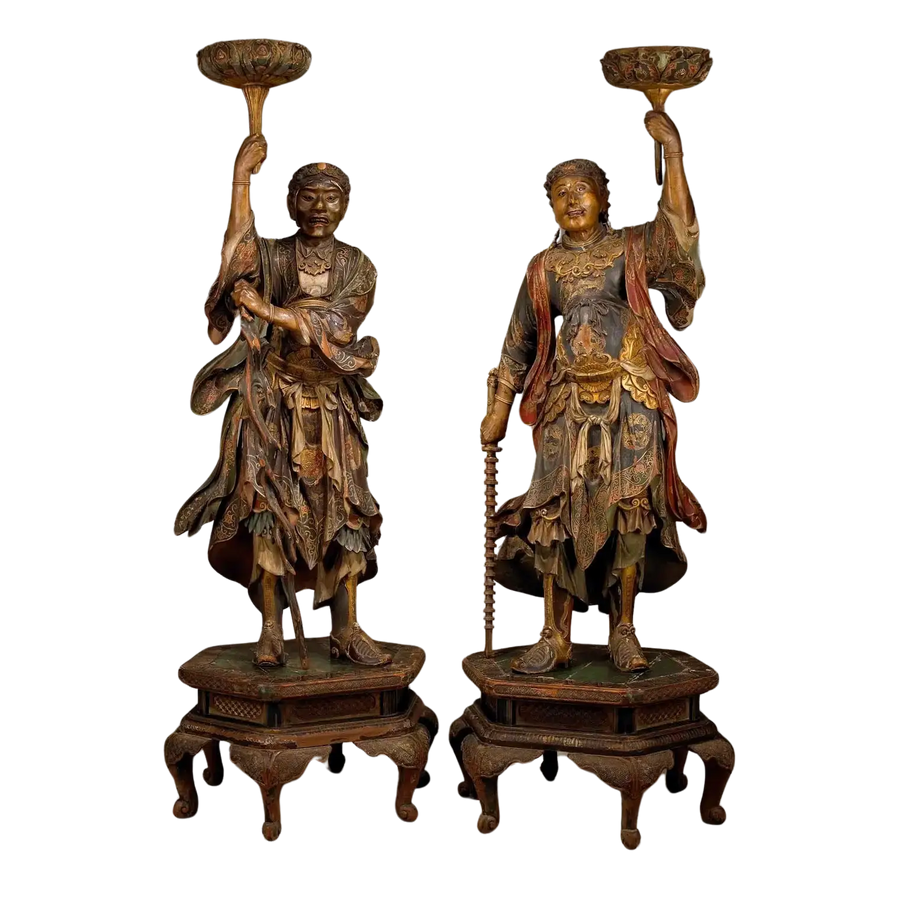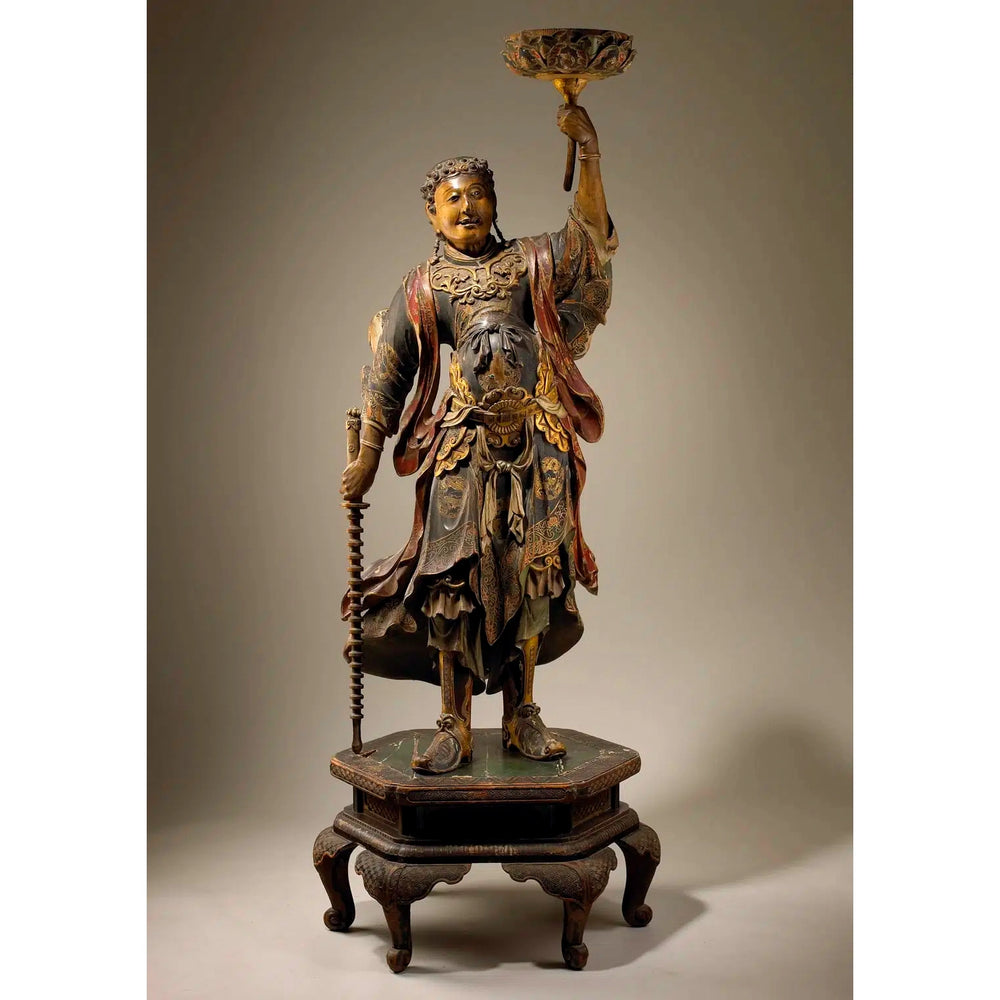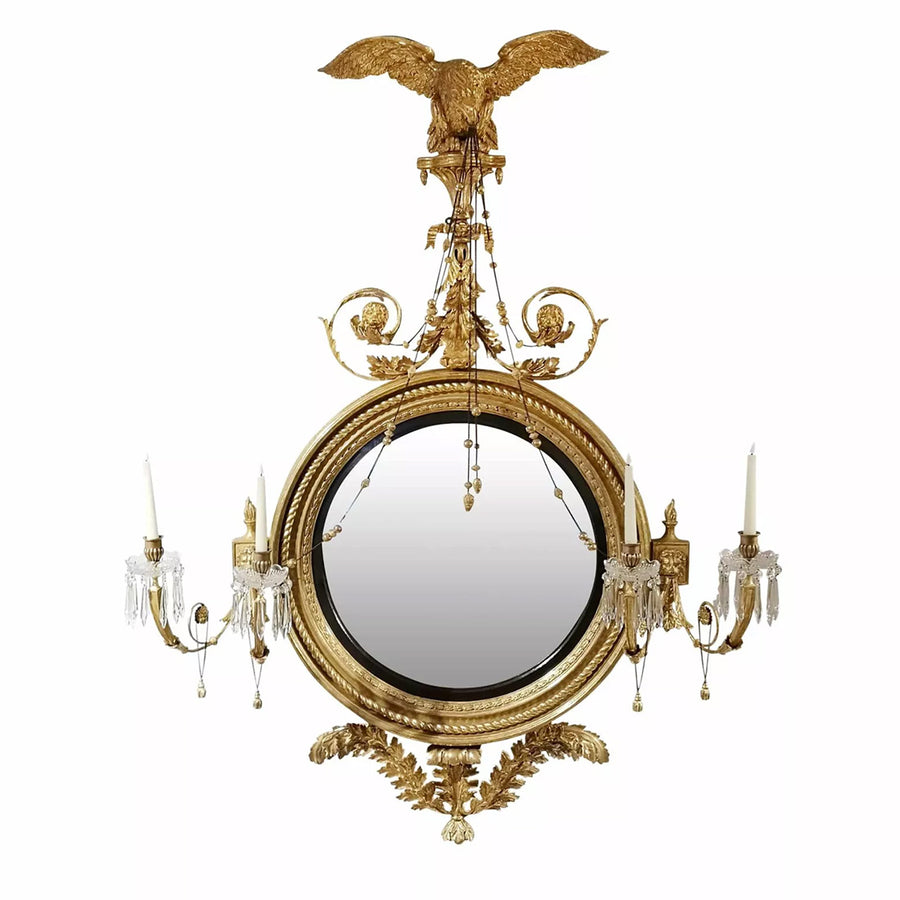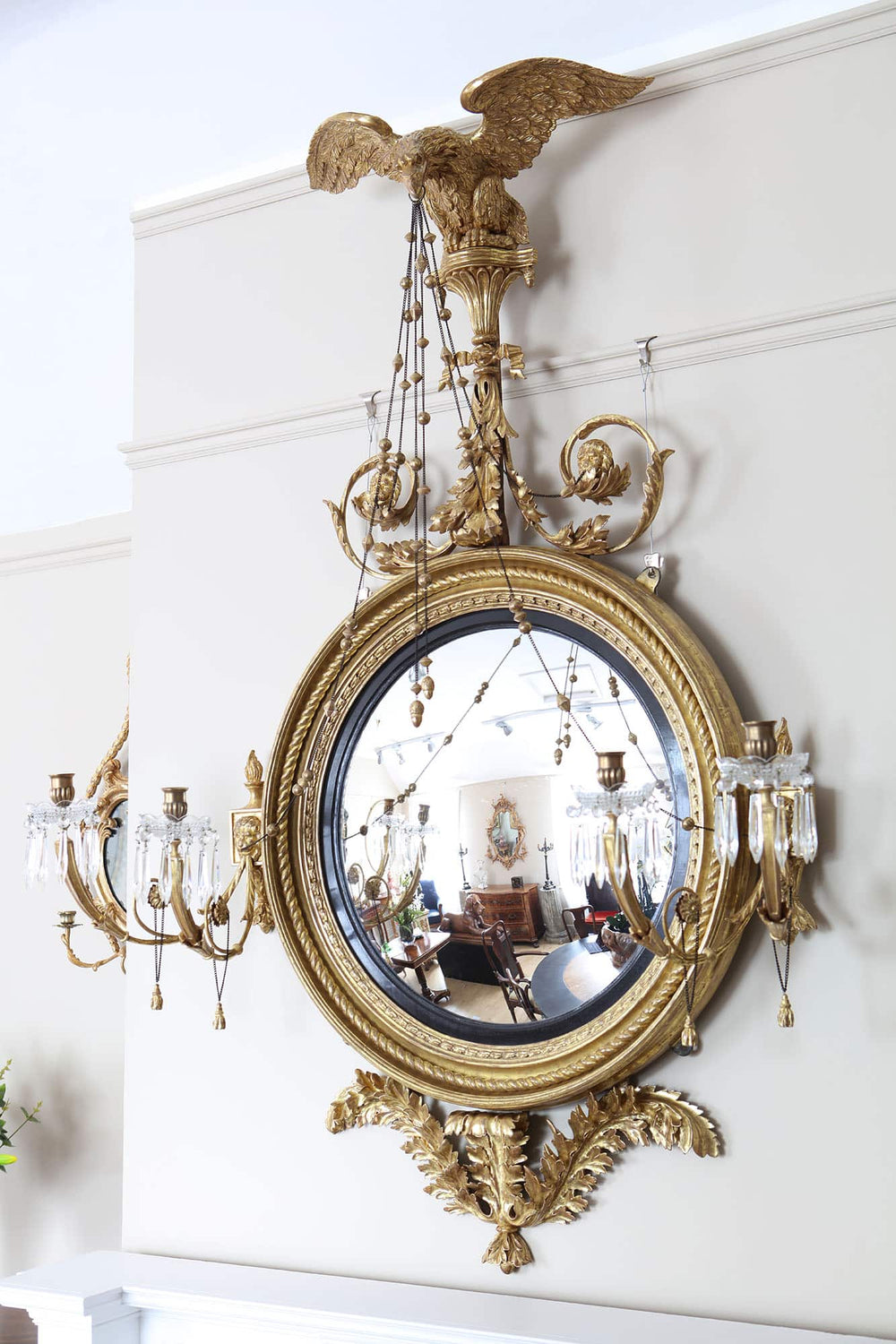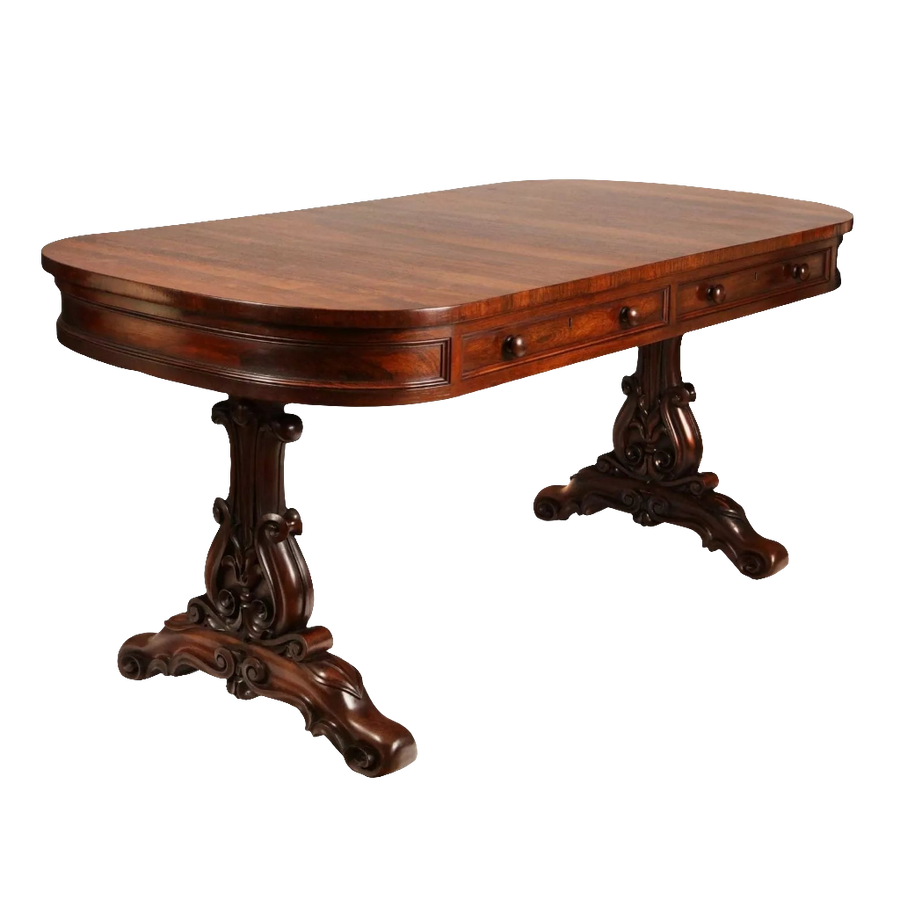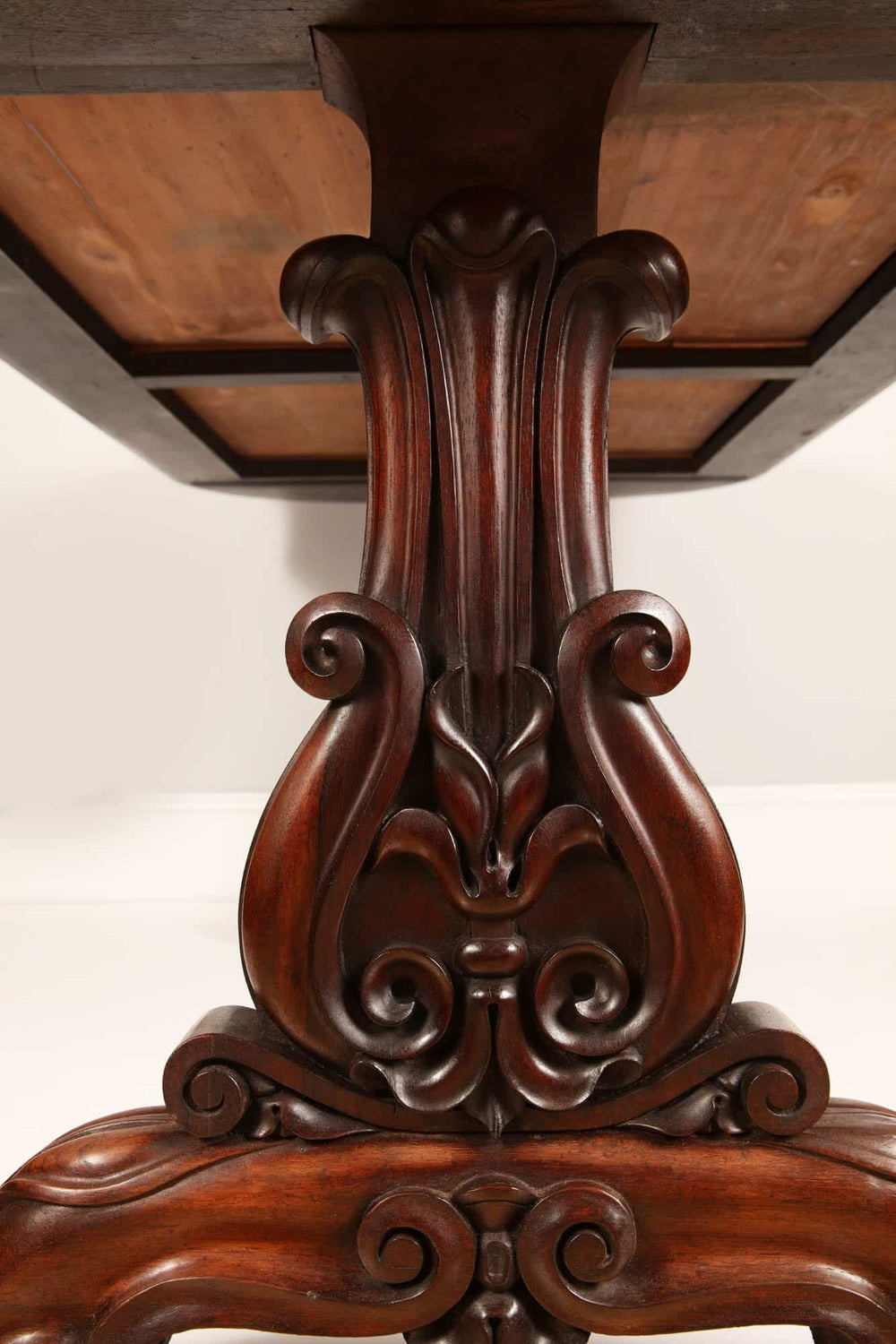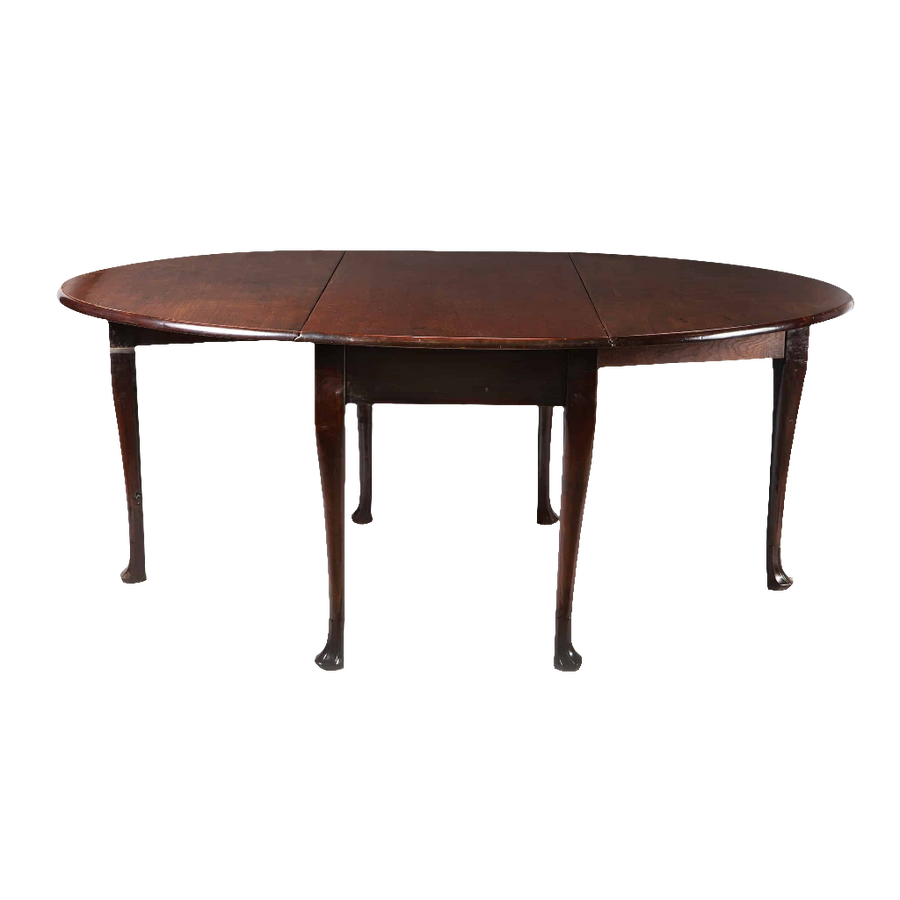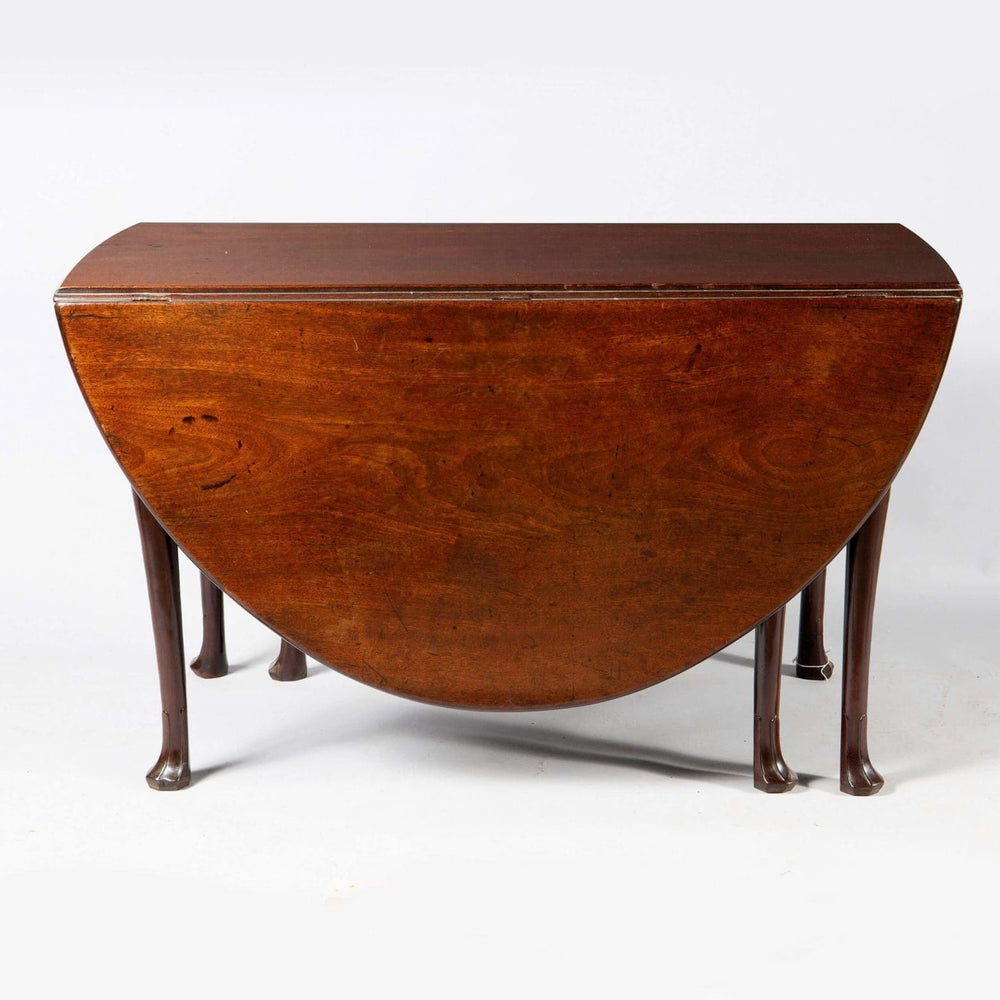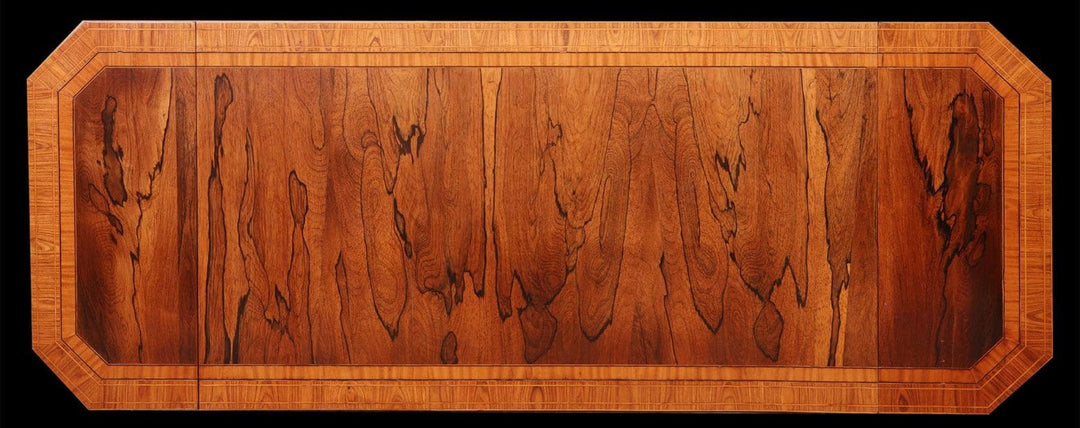
Irish Elegance in Wood
The 18th and 19th centuries represent a distinguished period in Ireland’s artistic history, marked by an exceptional flourishing of furniture and decorative arts. During this time, a distinctive Irish style emerged, reflecting the confluence of native craftsmanship and European influence. Grand country houses across Ireland showcased the finest examples of mahogany furniture and ornamental design, revealing the sophistication and wealth of the Anglo-Irish aristocracy. Ireland’s position as a key port for South American mahogany notably enhanced the calibre of its woodworking.
The Georgian Era: Symmetry and Subtlety
Spanning the reigns of George I to George IV, the Georgian period emphasised balance, proportion, and restrained elegance—values that deeply influenced Irish artisans.
- Craftsmanship in Dublin: The capital became a centre of excellence, with cabinetmakers such as William Moore and Robert Strahan achieving recognition for their richly carved mahogany pieces. Iconic design features included the ball-and-claw foot, lion-head motifs, and shell accents.
- Stately Homes as Showpieces: Estates like Castletown House and Carton House housed curated collections of furniture, silver, and glassware, each item reinforcing the refined tastes and cultural aspirations of the era.
The 19th Century: Revival and Opulence
This century saw an expansion of stylistic expression—from the understated elegance of Regency neoclassicism to the ornate designs of the Victorian age.
- Victorian Design: Furniture became heavier and more decorative, often incorporating dark woods, elaborate carvings, and plush textiles.
- Historical Revivals: Gothic, Rococo, and other revivalist trends gave rise to an eclectic blend of old and new, with Georgian heirlooms frequently juxtaposed with contemporary creations.
- Regency Restraint: In contrast, early 19th-century pieces reflected classical simplicity, showcasing symmetry and lightness.
Materials and Movements
While imported mahogany remained in high demand, local materials such as Irish oak gained favour among craftsmen seeking more regional expression.
- Arts and Crafts Movement: Towards the century’s end, this movement took hold in Ireland, championing hand-crafted objects, natural materials, and the value of skilled labour in reaction to industrial mass production.
FAQ: Irish Furniture and Decorative Arts of the 18th & 19th Centuries
What makes Irish furniture distinct from English or European pieces?
Irish furniture shares many stylistic influences with English Georgian design but often features bolder carving, distinctive motifs like the ball-and-claw foot or shell ornament, and the use of rich mahogany sourced through Irish ports.
Who were the most notable Irish cabinetmakers of the Georgian era?
Dublin was home to leading artisans such as William Moore and Robert Strahan, whose finely carved mahogany furniture earned them recognition across Ireland and beyond.
Why was mahogany so important to Irish furniture makers?
Ireland’s position as a major port for South American mahogany provided craftsmen with a steady supply of high-quality timber. Its durability, rich colour, and workability made it ideal for fine carving and luxurious furniture.
What types of furniture are most associated with 18th-century Irish design?
Iconic forms include mahogany chairs with shell or lion-head motifs, robust dining tables, and intricately carved case furniture. Stately homes often displayed these alongside silver and glassware.
How did Irish furniture styles evolve in the 19th century?
The early 19th century reflected Regency restraint and neoclassical elegance, while the Victorian era introduced heavier, more decorative furniture with revivalist Gothic and Rococo influences.
Was Irish oak also used in furniture making?
Yes. While mahogany was the prestige timber, native Irish oak gained popularity, especially among craftsmen associated with the Arts and Crafts Movement in the late 19th century.
How did the Arts and Crafts Movement affect Irish design?
It promoted hand-crafted quality and natural materials, encouraging a return to traditional skills and regional woods in reaction to industrial mass production.
Are Irish antiques from this period collectible today?
Absolutely. Their craftsmanship, rich materials, and cultural significance make them highly sought after by collectors, with particularly fine examples still found in stately homes and leading collections.
Conclusion
Ireland’s contribution to furniture and decorative arts during the 18th and 19th centuries is both visually striking and culturally profound. The blending of European aesthetics with local traditions produced a style that is uniquely Irish—elegant, enduring, and expressive of a nation’s identity. Today, these creations stand not only as historical artefacts, but as testaments to the artistry and ingenuity of a bygone era.




